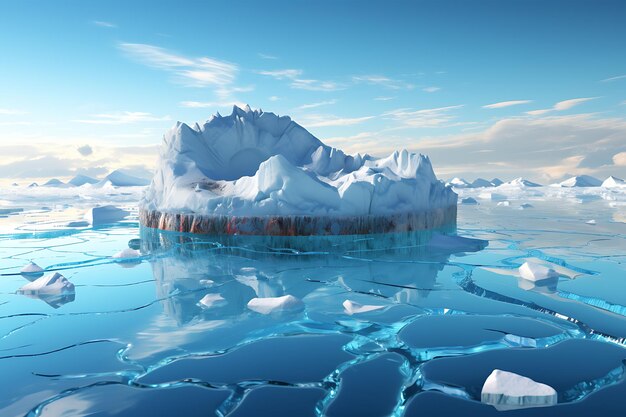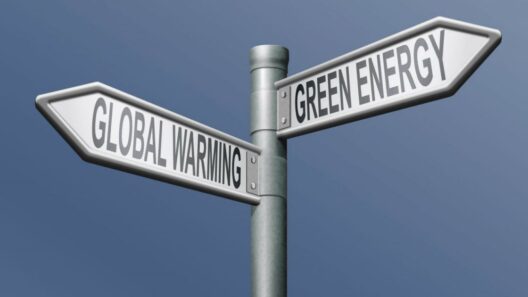As stewards of this planet, we find ourselves on a precipice, watching as the polar bear—an emblematic sentinel of the Arctic—stands at the boundary between existence and extinction. These majestic creatures, with their brilliant white coats that blend seamlessly into the icy expanses, are not merely a stunning symbol of the polar regions but also a barometer of the broader ecological upheaval attributed to climate change. The warming of the Earth, akin to a slow, merciless flame licking at the edges of a melting ice sculpture, has rendered their habitat increasingly inhospitable.
To grasp the predicament faced by polar bears, one must first understand the intricate tapestry of their environment. The Arctic, a realm characterized by its frigid temperatures and immense ice floes, functions as both a hunting ground and a nursery for these apex predators. Unfortunately, this pristine habitat is rapidly unraveling. As temperatures rise, the sea ice that forms the backbone of their ecosystem begins to dissolve, diminishing the platform upon which polar bears rely to hunt seals, their primary prey. Herein lies a profound metaphor: the ice melts not just beneath their paws but beneath the very foundation of their survival.
Polar bears, scientifically classified as Ursus maritimus, are finely attuned to their environment. Their keen sense of smell allows them to detect seals nearly a mile away and beneath several feet of compacted snow and ice. However, with the Arctic losing ice at an alarming rate—approximately 13 percent per decade—the bears are faced with a dire conundrum: how to adapt to a landscape that no longer supports their age-old hunting strategies. This profound disruption not only impacts their ability to procure food but also affects their reproductive success. Females that grapple with insufficient nourishment cannot nurture their young effectively, jeopardizing future generations and perpetuating a cycle of decline.
The plight of the polar bear transcends mere statistics; it embodies a broader narrative about our treatment of the Earth. As climate change engenders a chain reaction of environmental alterations—rising sea levels, unpredictable weather patterns, and melting glaciers—we must confront the question of our collective agency. Will we allow our indifference to drown these majestic creatures in an irreversible tide, or will we galvanize prompt action to mitigate this calamity? The apex predator’s struggle is a clarion call—a reminder that the fragility of life is a shared burden, and its threat reverberates through the interconnected web of life on our planet.
This ongoing crisis is further compounded by the phenomenon of bioaccumulation; as ice diminishes, pollutants that had previously settled in the frozen environment are re-released into the ecosystem. Chemicals such as mercury and PCBs, once locked away in the Arctic ice, now resurface, entering the food chain and accumulating in the fat tissues of polar bears. This relentless exposure not only diminishes their fitness but also poses a profound risk to their reproductive health and longevity, illustrating the inextricable link between climate change and environmental contamination. The Arctic, then, transforms from a sanctuary of purity to a battleground riddled with toxic remnants of human activity.
Moreover, the cultural significance of polar bears cannot be understated. Indigenous communities have coexisted with these magnificent animals for millennia, weaving their presence into the fabric of their mythology, subsistence, and identity. For many Arctic peoples, the bear is not merely a creature to be observed but a revered spirit that teaches resilience and respect for the land. The extinction of the polar bear would not solely lead to ecological ramifications; it would shatter cultural paradigms and erode the time-honored traditions that flourish alongside these remarkable beings.
The repercussions of the warming world extend beyond the Arctic glaciers, cascading throughout the global ecosystem. The decline of polar bear populations serves as a harbinger of broader changes affecting biodiversity across the planet. As predators wane, prey populations will experience their own upheavals, leading to further imbalances within ecosystems. A tale of extremes unfolds, as certain species may flourish unchecked while others could be driven to the brink of collapse. This creates a domino effect, one that can lead to extensive loss of biodiversity and diminished ecosystem services vital for humanity’s survival.
Nevertheless, amid this grim tableau, there exists a sliver of hope. Conservation efforts, if robustly implemented and adequately funded, have the potential to alter the trajectory of this narrative. Initiatives aimed at mitigating climate change through reducing carbon emissions, protecting critical habitats, and fostering global cooperation present pathways to restoration. The establishment of marine protected areas, legislative advocacy, and community engagement can all serve as bulwarks against the tide of destruction. Each small act, whether it involves reducing one’s carbon footprint or advocating for policy changes, contributes to a larger mosaic of resilience.
In conclusion, the polar bear finds itself on the brink, caught in the crosshairs of climate change and ecological turbulence. Their plight is a stark reminder of the intricate interdependencies that characterize our world. As the ice caps continue to dissolve, we must critically assess our responsibilities and our roles in the saga of survival. The survival of the polar bear symbolizes more than just the fate of one species; it epitomizes the urgent need for humanity to embrace sustainable practices, harmonize with nature, and foster a world where both people and wildlife can thrive. This is not merely a call to action; it is a call to conscience—a reminder that beneath the shifting ice lies a deeper truth: we are all interconnected, and our fates are inexorably intertwined.







